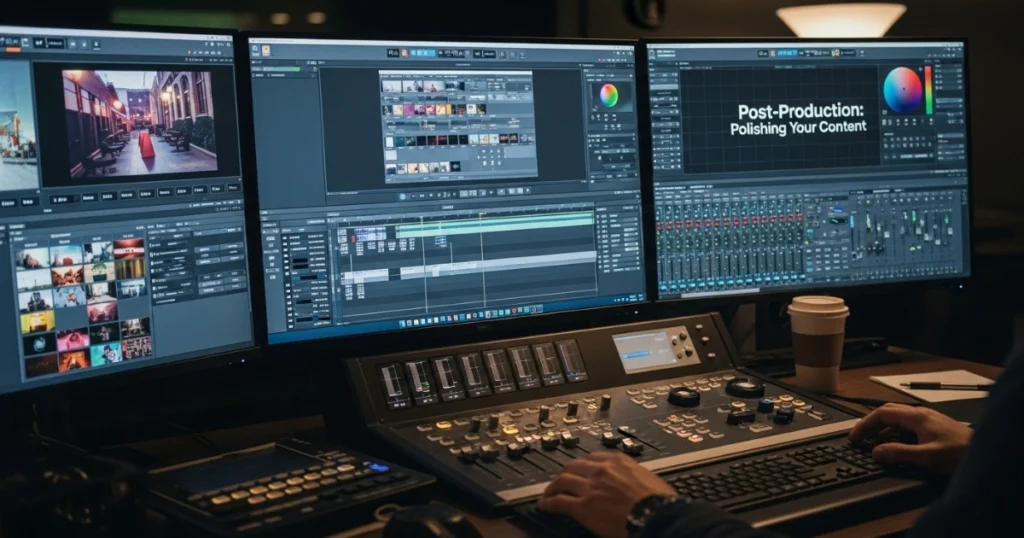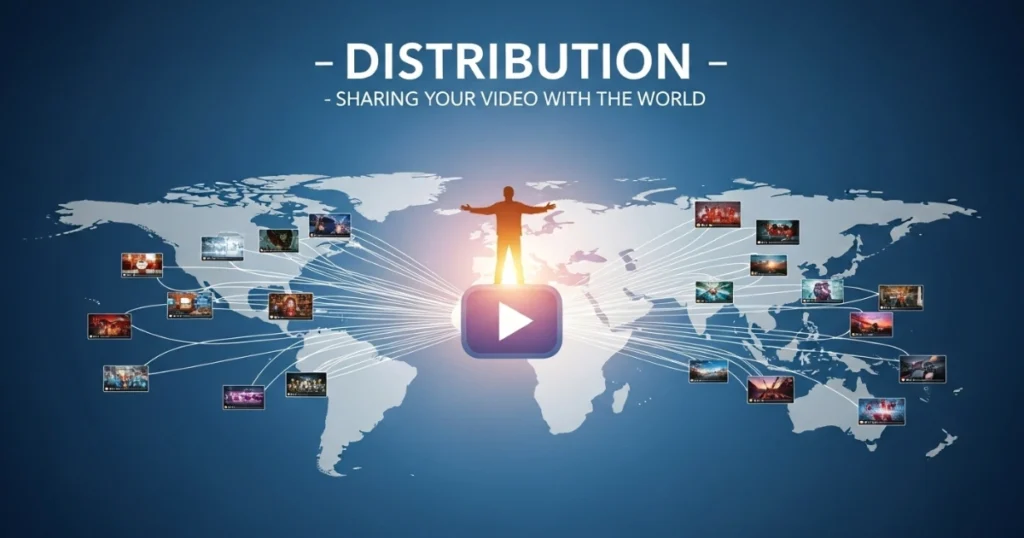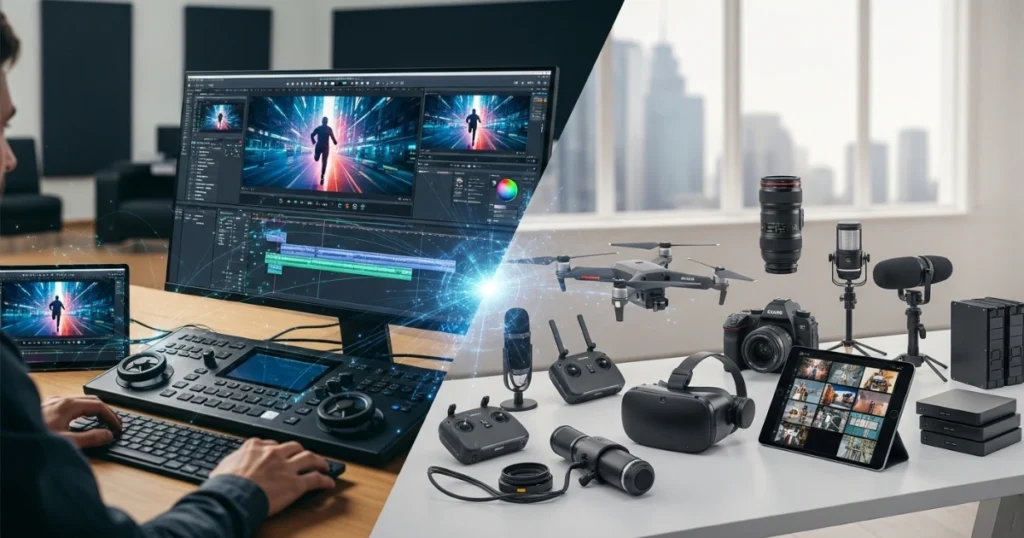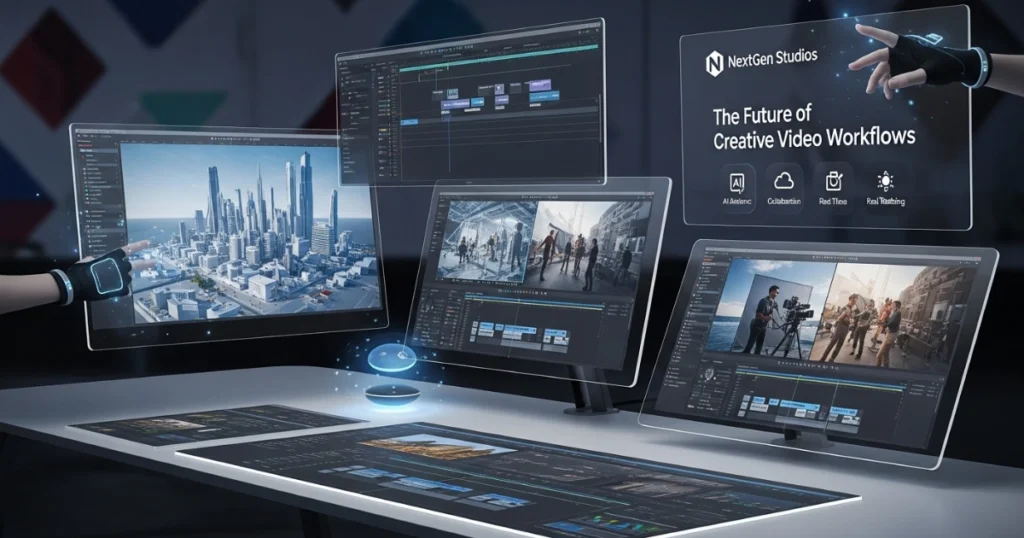
AI Videos
Creative Video Workflows: Boost Efficiency & Quality

Contents
- 1 What Are Creative Video Workflows?
- 2 Step 1: Pre-Production – Laying the Foundation
- 3 Step 2: Production – Bringing Ideas to Life
- 4 Step 3: Post-Production – Polishing Your Content
- 5 Step 4: Distribution – Sharing Your Video with the World
- 6 Tools to Enhance Creative Video Workflows
- 7 Tips for Maximizing Time in Creative Video Workflows
- 8 Common Mistakes to Avoid
- 9 The Future of Creative Video Workflows
Creative video workflows are the backbone of efficient, high-quality video production, enabling creators to transform ideas into captivating content with maximum efficiency. In today’s fast-paced digital landscape, where video content dominates marketing, entertainment, and education, mastering these workflows is essential. Whether you’re a solo filmmaker, a small business owner, or part of a large production team, optimizing your video production process saves time, reduces stress, and elevates the final product. This article explores proven strategies, tools, and techniques to streamline your creative video workflows, ensuring you achieve professional results while maximizing your time.
What Are Creative Video Workflows?
A creative video workflow is the structured process of planning, producing, editing, and distributing video content. It encompasses every step, from ideation to final delivery, designed to make production seamless and efficient. By implementing creative video workflows, you can avoid common pitfalls like missed deadlines, budget overruns, or inconsistent quality. Moreover, a well-defined workflow allows creators to focus on storytelling and innovation rather than logistical challenges.
Why Creative Video Workflows Matter
Effective workflows are critical for several reasons. First, they save time by providing a clear roadmap for each project phase. Second, they improve collaboration, especially for teams working remotely or across departments. Finally, they ensure consistency, which is vital for brands or creators building a recognizable style. For instance, a streamlined workflow can reduce production time by up to 30%, according to industry studies, allowing creators to produce more content without sacrificing quality.
Step 1: Pre-Production – Laying the Foundation
Pre-production is the planning phase where creative video workflows begin. This stage sets the tone for the entire project, so investing time here is crucial for maximizing efficiency later.

Brainstorming and Concept Development
Start with a clear vision. Brainstorm ideas that align with your goals, whether it’s to educate, entertain, or promote. Use tools like Trello or Notion to organize concepts and collaborate with team members. For example, create a mood board on Pinterest to visualize aesthetics. This step ensures everyone understands the project’s direction, saving time during production.
Scriptwriting and Storyboarding
Next, craft a detailed script and storyboard. A script outlines dialogue, narration, or key messages, while a storyboard visualizes scenes. Tools like Celtx or Storyboarder simplify this process. By mapping out shots in advance, you avoid costly reshoots and ensure your creative video workflows remain on track. Additionally, allocate time for feedback to refine the script before moving forward.
Budgeting and Scheduling
A well-planned budget and schedule prevent unexpected delays. Use software like Google Sheets or Microsoft Excel to track expenses, from equipment rentals to talent fees. For scheduling, tools like Monday.com help assign tasks and deadlines. By anticipating challenges, you maximize time and keep your project within budget.
Step 2: Production – Bringing Ideas to Life
The production phase is where your vision takes shape. Efficient creative video workflows during this stage rely on preparation, communication, and the right tools.

Choosing the Right Equipment
Select equipment that matches your project’s needs. For instance, a Sony A7III camera is ideal for high-quality footage on a budget, while a DJI Ronin-S stabilizer ensures smooth shots. Additionally, invest in quality lighting and audio gear, such as Aputure lights or Rode microphones, to enhance production value. Proper equipment reduces post-production fixes, saving time.
On-Set Efficiency
During filming, clear communication is key. Use walkie-talkies or apps like Slack for real-time updates. Moreover, assign specific roles—director, cinematographer, sound engineer—to streamline tasks. To maximize time, stick to the shooting schedule and prioritize key shots. For example, filming B-roll alongside primary footage can cut production time significantly.
Managing Unexpected Challenges
Unexpected issues, like weather changes or technical glitches, can derail production. Always have a backup plan, such as indoor shooting locations or spare batteries. By anticipating problems, your creative video workflows remain flexible and efficient.
Step 3: Post-Production – Polishing Your Content
Post-production is where raw footage transforms into a polished video. This phase demands precision to maintain the quality established in earlier stages.

Editing Software and Techniques
Choose editing software that suits your skill level and project needs. Adobe Premiere Pro and Final Cut Pro are industry standards for their robust features. For beginners, DaVinci Resolve offers a free, user-friendly option. To maximize time, use keyboard shortcuts and templates for repetitive tasks like color grading or transitions. For instance, creating a preset for your brand’s color scheme can save hours across projects.
Sound Design and Music
Sound design is often overlooked but critical for professional videos. Use royalty-free music libraries like Epidemic Sound or Artlist to find tracks that match your tone. Additionally, clean up audio with tools like Adobe Audition to remove background noise. A well-balanced soundtrack enhances viewer engagement and elevates your creative video workflows.
Collaboration and Feedback
If working with a team, use platforms like Frame.io for seamless feedback. Share drafts securely and track revisions to avoid confusion. This collaborative approach ensures everyone’s input is considered, reducing revision cycles and saving time.
Step 4: Distribution – Sharing Your Video with the World
Once your video is complete, distribution is the final step in your creative video workflows. A strategic approach ensures your content reaches the right audience.

Optimizing for Platforms
Different platforms require specific formats. For YouTube, aim for 1080p or 4K resolution with a 16:9 aspect ratio. For Instagram, prioritize vertical or square videos. Tools like HandBrake can compress files without losing quality, ensuring faster uploads. By tailoring content to each platform, you maximize engagement and save time on reformatting.
SEO and Promotion
To boost visibility, optimize your video’s title, description, and tags with relevant keywords. For example, include “creative video workflows” in your YouTube description to improve searchability. Additionally, promote your video on social media using tools like Hootsuite to schedule posts. A strong promotion strategy amplifies your reach and ensures your time investment pays off.
Analyzing Performance
After publishing, track performance using analytics tools like YouTube Studio or Vimeo Analytics. Monitor metrics like watch time, click-through rate, and audience retention to gauge success. Use these insights to refine future creative video workflows, ensuring continuous improvement.
Tools to Enhance Creative Video Workflows
The right tools can significantly streamline your creative video workflows. Here’s a curated list of essentials:

- Pre-Production: Trello, Notion, Celtx, Storyboarder
- Production: Sony A7III, DJI Ronin-S, Aputure lights, Rode microphones
- Post-Production: Adobe Premiere Pro, DaVinci Resolve, Adobe Audition, Frame.io
- Distribution: HandBrake, Hootsuite, YouTube Studio
These tools automate repetitive tasks, improve collaboration, and maximize time, allowing you to focus on creativity.
Tips for Maximizing Time in Creative Video Workflows
Time management is critical for efficient workflows. Here are actionable tips to maximize time:
- Batch Tasks: Group similar tasks, like filming all B-roll in one session, to reduce setup time.
- Use Templates: Create reusable assets, such as motion graphics or color grading presets, to speed up editing.
- Outsource When Needed: Delegate tasks like sound design or color correction to freelancers via platforms like Upwork to save time.
- Stay Organized: Keep files organized with clear naming conventions (e.g., “ProjectX_Scene1_Footage”) to avoid searching for assets.
- Learn Shortcuts: Master software shortcuts to cut editing time by up to 20%.
By implementing these strategies, you ensure your creative video workflows are both efficient and effective.
Common Mistakes to Avoid
Even with the best creative video workflows, mistakes can derail progress. Here are pitfalls to watch for:
- Skipping Pre-Production: Rushing into filming without a plan leads to costly reshoots.
- Ignoring Audio Quality: Poor audio can ruin an otherwise great video. Always test microphones on set.
- Overcomplicating Edits: Avoid excessive effects that prolong editing without adding value.
- Neglecting Audience Feedback: Failing to analyze performance metrics limits improvement.
By avoiding these errors, you maintain efficiency and quality throughout your workflow.
The Future of Creative Video Workflows

As technology evolves, so do creative video workflows. Emerging tools like AI-powered editing software (e.g., RunwayML) and cloud-based collaboration platforms are revolutionizing production. For instance, AI can automate tasks like scene detection or subtitle generation, saving hours. Additionally, virtual reality (VR) and augmented reality (AR) are opening new creative possibilities, requiring workflows to adapt. Staying updated on these trends ensures your processes remain cutting-edge.
Conclusion
Mastering creative video workflows is the key to producing high-quality content efficiently. By carefully planning pre-production, streamlining production, polishing post-production, and optimizing distribution, you can create videos that captivate audiences while maximizing time. Embrace the tools, strategies, and tips outlined in this article to transform your video production process. Whether you’re a beginner or a seasoned creator, refining your creative video workflows will elevate your work and help you stand out in a competitive digital world. Start implementing these techniques today, and watch your efficiency and creativity soar.


CG Pipeline Automation: Boost Efficiency in 2025
Updated on August 24, 2025
Read More